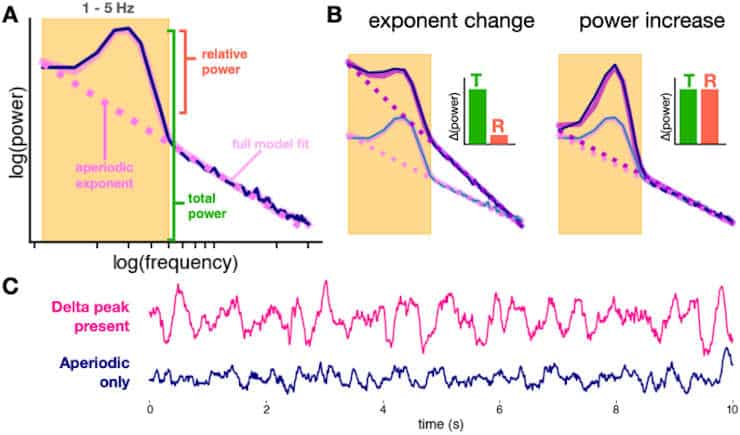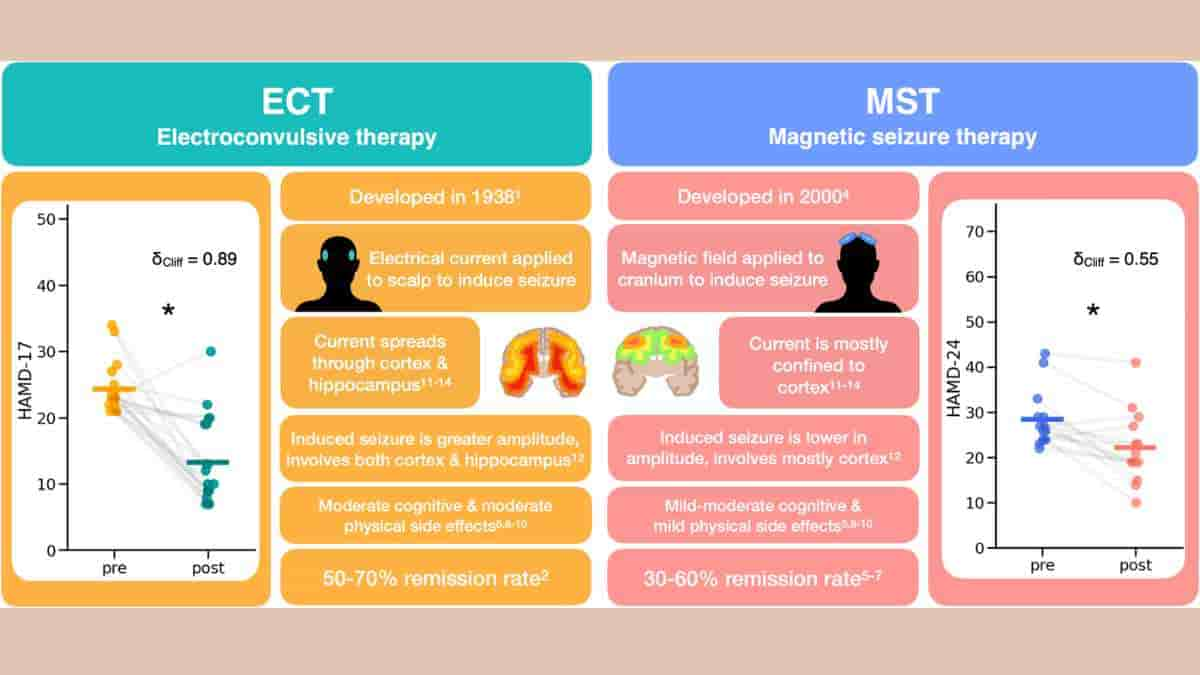Electroconvulsive therapy (ECT), formerly known as electroshock therapy, involves producing a brief seizure in the brain with regulated doses of electricity. While ECT is extremely helpful for certain mental diseases, particularly depression, the reasons for its effectiveness have long perplexed psychiatrists and neuroscientists.
University of California, San Diego researchers may now have the solution. Aperiodic activity, which is considered to be the brain’s background noise and does not follow a consistent pattern, is hypothesized to be the mechanism by which electroconvulsive therapy (ECT) alleviates symptoms of depression. This notion is supported by two recent studies.
“We’re solving a puzzle that’s stumped scientists and doctors since electroconvulsive therapy was first developed nearly a century ago. On top of that, we’re also helping to demystify one of the most effective yet stigmatized treatments for severe depression.”
said first author Sydney Smith, a Ph.D. candidate in the Voytek Lab at UC San Diego.
Good Treatment, Bad Reputation
Electroconvulsive therapy has a great track record, but a bad reputation. The therapy is effective in up to 80% of patients who receive the treatment, most often for depression but occasionally for bipolar disorder or schizophrenia.
Despite its high success rate, electroconvulsive therapy is frequently associated with images of people receiving painful, high voltage shocks.
“A lot of people are surprised to learn that we still use electroconvulsive therapy, but the modern procedure uses highly controlled dosages of electricity and is done under anesthesia. It really doesn’t look like what you see in movies or television,”
said Smith.
Minimizing ECT Side Effects
While generally safe and effective, ECT does have drawbacks, including temporary confusion and cognitive impairment. It also necessitates multiple outpatient visits, which may be prohibitive for some patients who would otherwise benefit from the treatment.
“One of the reasons ECT isn’t more popular is that for a lot of people, it’s easier and more convenient to just take a pill. However, in people for whom medications don’t work, electroconvulsive therapy can be life-saving. Understanding how it works will help us discover ways to increase the benefits while minimizing side effects,”
said senior author Bradley Voytek, Ph.D., professor of cognitive science at UC San Diego.
The researchers used electroencephalography (EEG) scans to study the brain activity of patients who received ECT therapy for depression.
They also looked at another similar form of treatment called magnetic seizure therapy, which induces a seizure with magnets instead of electrodes. Both therapies showed increased aperiodic activity levels in patients’ brains post-treatment.
Aperiodic Activity
Aperiodic activity is similar to background noise in the brain, and for many years, scientists ignored it.
“However, we’re now seeing that this activity actually has an important role in the brain, and we think electroconvulsive therapy helps restore this function in people with depression,”
said Smith. One of the functions of aperiodic activity in the brain is helping control how neurons turn on and off.
Our neurons are constantly going through cycles of excitation and inhibition that correspond with different mental states. Aperiodic activity helps boost inhibitory activity in the brain, effectively slowing it down.
Slowing Brains Down

Credit: Transl Psychiatry 13, 348 (2023). doi: 10.1038/s41398-023-02634-9
Something that is seen regularly in the EEG scans of people who receive electroconvulsive or magnetic seizure therapy is a slowing pattern in the brain’s electrical activity.
“This pattern has gone unexplained for many years, but accounting for the inhibitory effects of aperiodic activity helps explain it. It also suggests that these two forms of therapy are causing similar effects in the brain,”
said Smith.
Although the results of this study demonstrate a correlation between aperiodic activity and the advantages of electroconvulsive therapy (ECT), the authors emphasize the importance of additional research in order to apply these findings to clinical settings. At the moment, they are looking into whether aperiodic activity can be used as a way to measure how well different treatments for depression, such as medication, work.
“At the end of the day, what’s most important to patients and to doctors is that the treatment works, which in the case of ECT, it does. However, it’s our job as scientists to dig into what’s really going on in the brain during these treatments, and continuing to answer those questions will help us find ways to make these treatments even more effective while reducing negative effects,”
said Voytek.
References:
- Smith, S.E., Ma, V., Gonzalez, C. et al. Clinical EEG slowing induced by electroconvulsive therapy is better described by increased frontal aperiodic activity. Transl Psychiatry 13, 348 (2023). doi: 10.1038/s41398-023-02634-9
- Smith, S.E., Kosik, E.L., van Engen, Q. et al. Magnetic seizure therapy and electroconvulsive therapy increase aperiodic activity. Transl Psychiatry 13, 347 (2023). doi: 10.1038/s41398-023-02631-y
Top Image: Electroconvulsive therapy (ECT), and magnetic seizure therapy (MST) infographic. Both treatments are typically only used on patients with treatment-resistant depression and involve inducing a seizure, either with an electrical current or a magnetic field. The main difference is that ECT has a more global spread to subcortical structures and hippocampus, whereas MST affects more local cortical structures. Credit: Transl Psychiatry 13, 347 (2023). doi: 10.1038/s41398-023-02631-y
Last Updated on March 4, 2024
